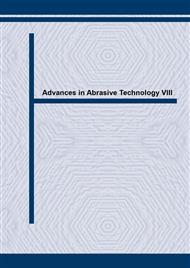p.625
p.631
p.637
p.643
p.649
p.655
p.661
p.667
p.673
An Optimal Matching Algorithm Based on Rough Localization and Exact Adjustment
Abstract:
Aiming at the problems on estimate of the initial transformation, matching precision and global optimization in matching, this paper presents a matching method, which is based on rough localization and exact adjustment. By means of rotation, translation and coincidence of the minimum bounding boxes of surface and measured points, rough localization is realized, which produces a good estimate for the follow-up iterative algorithm. The closest points that were calculated via the normal projection of the sample points then establish the correspondence between two objects. An iterative process is used in the exact adjustment to ensure the global optimization of match. For reducing the effect of bad points or local distortion, a maximum distance criterion is adopted to refine the transformation between objects. A computer simulation is given to demonstrate that the algorithm is steady and effective.
Info:
Periodical:
Pages:
661-666
Citation:
Online since:
August 2005
Keywords:
Price:
Сopyright:
© 2005 Trans Tech Publications Ltd. All Rights Reserved
Share:
Citation:


